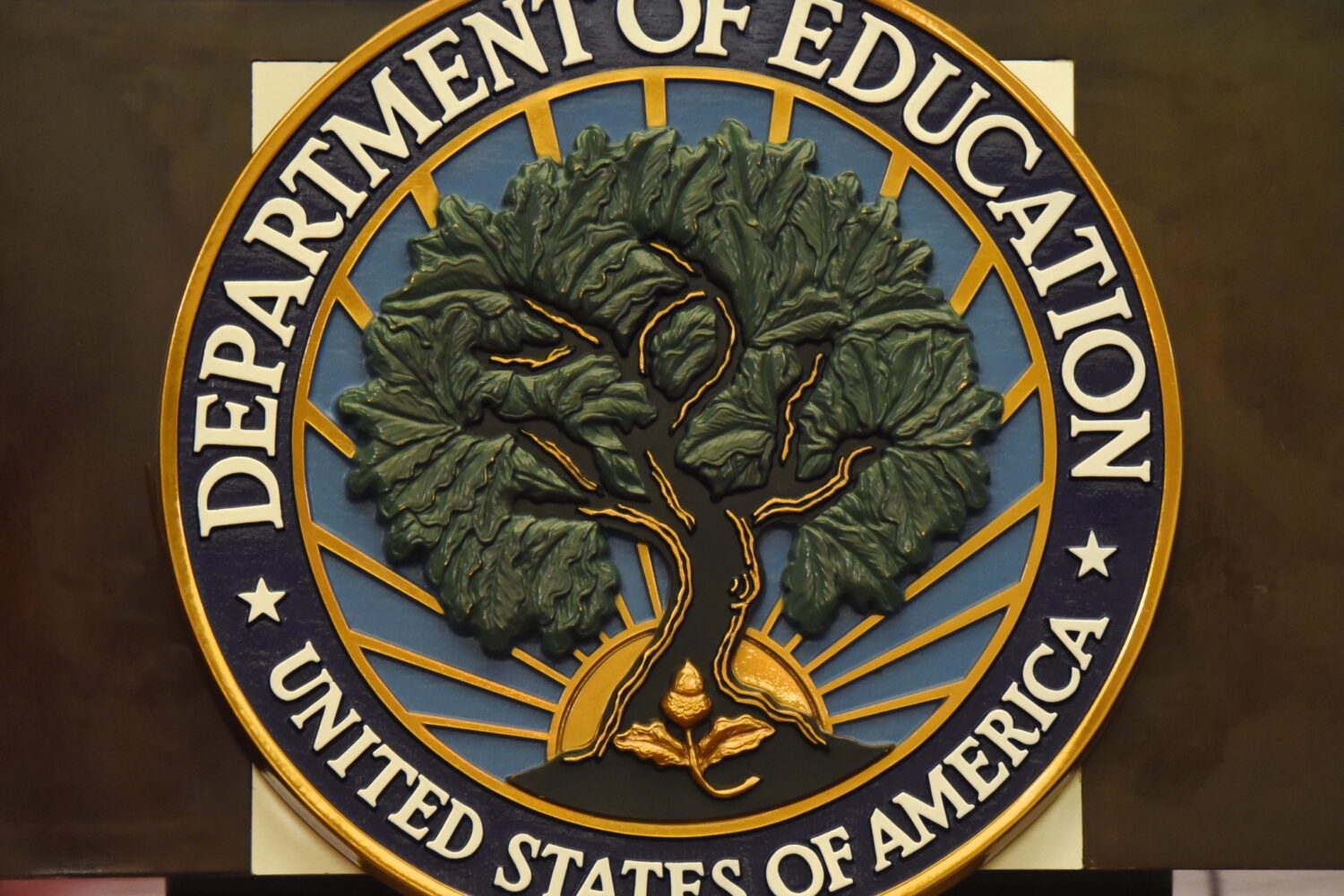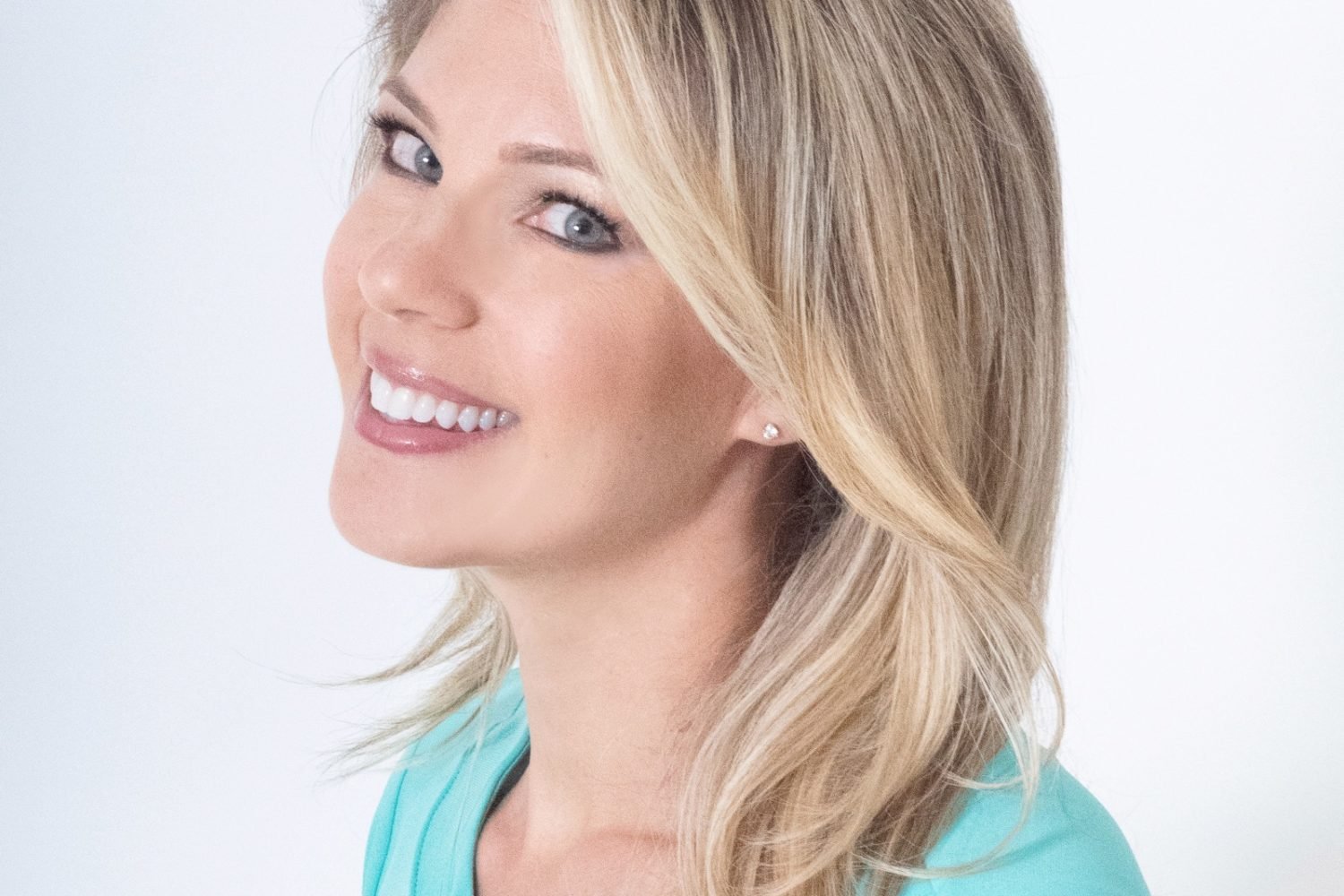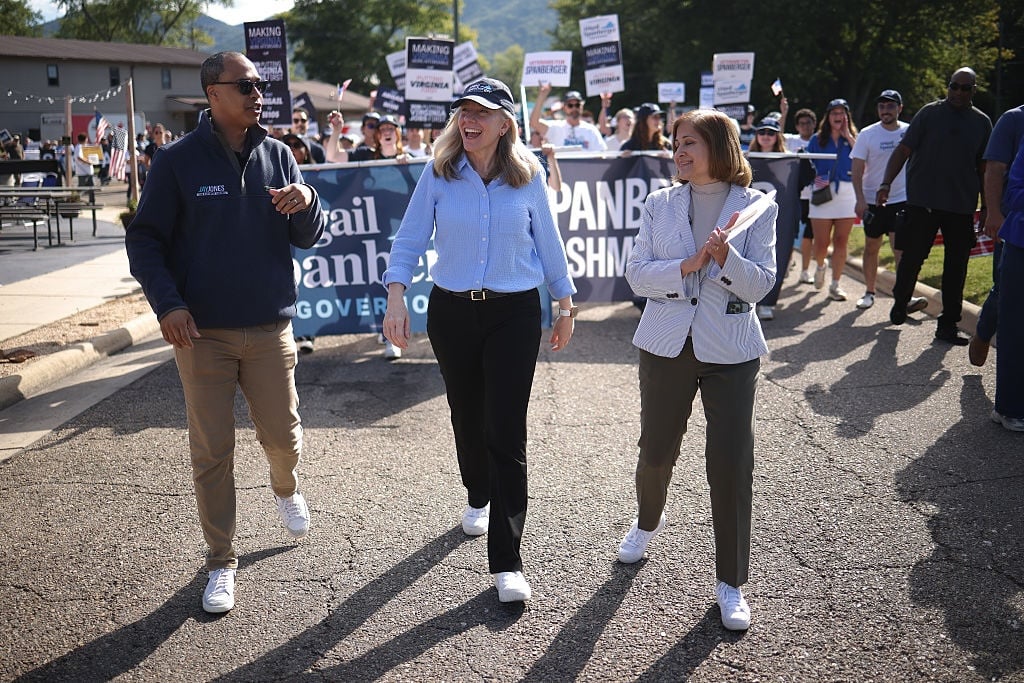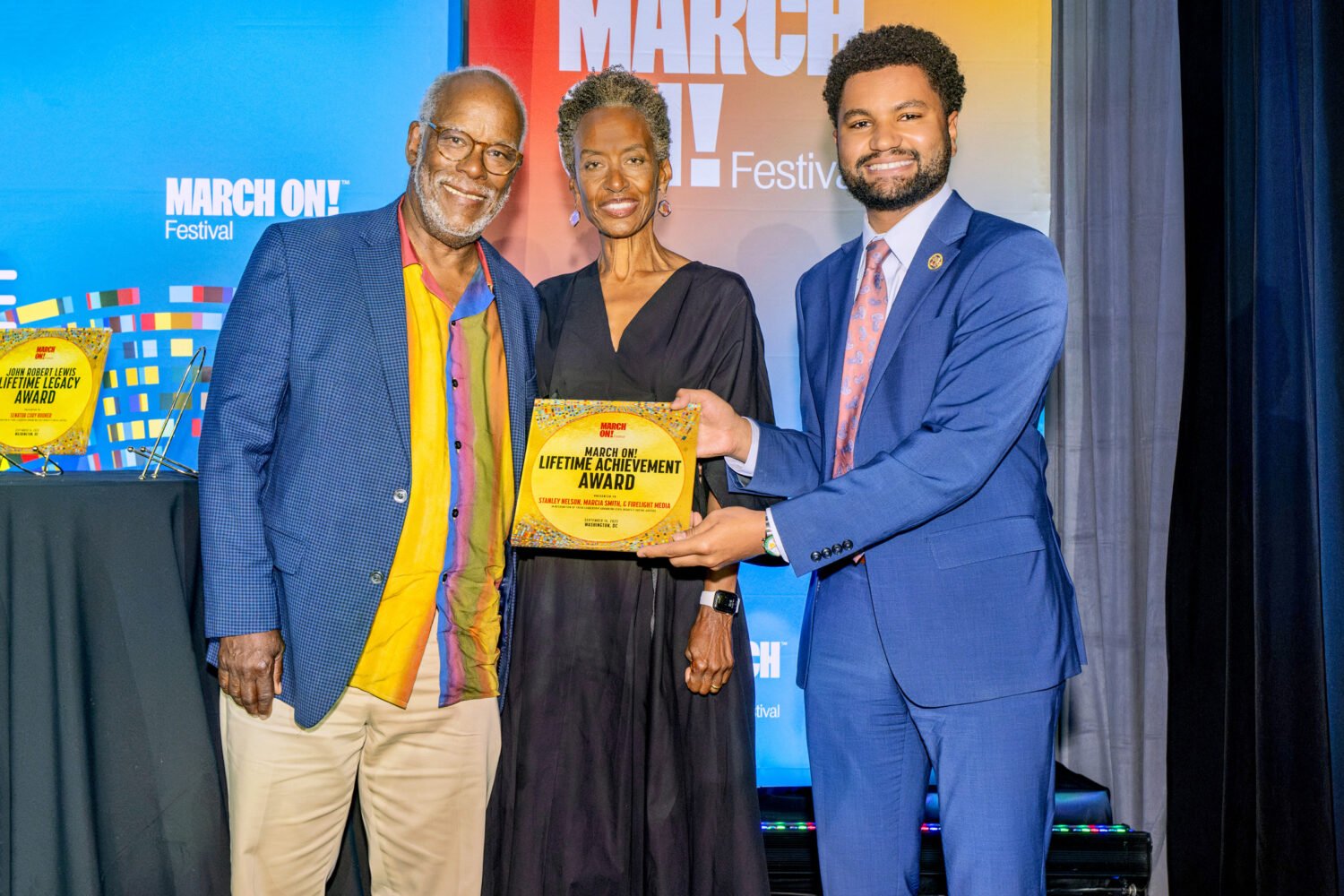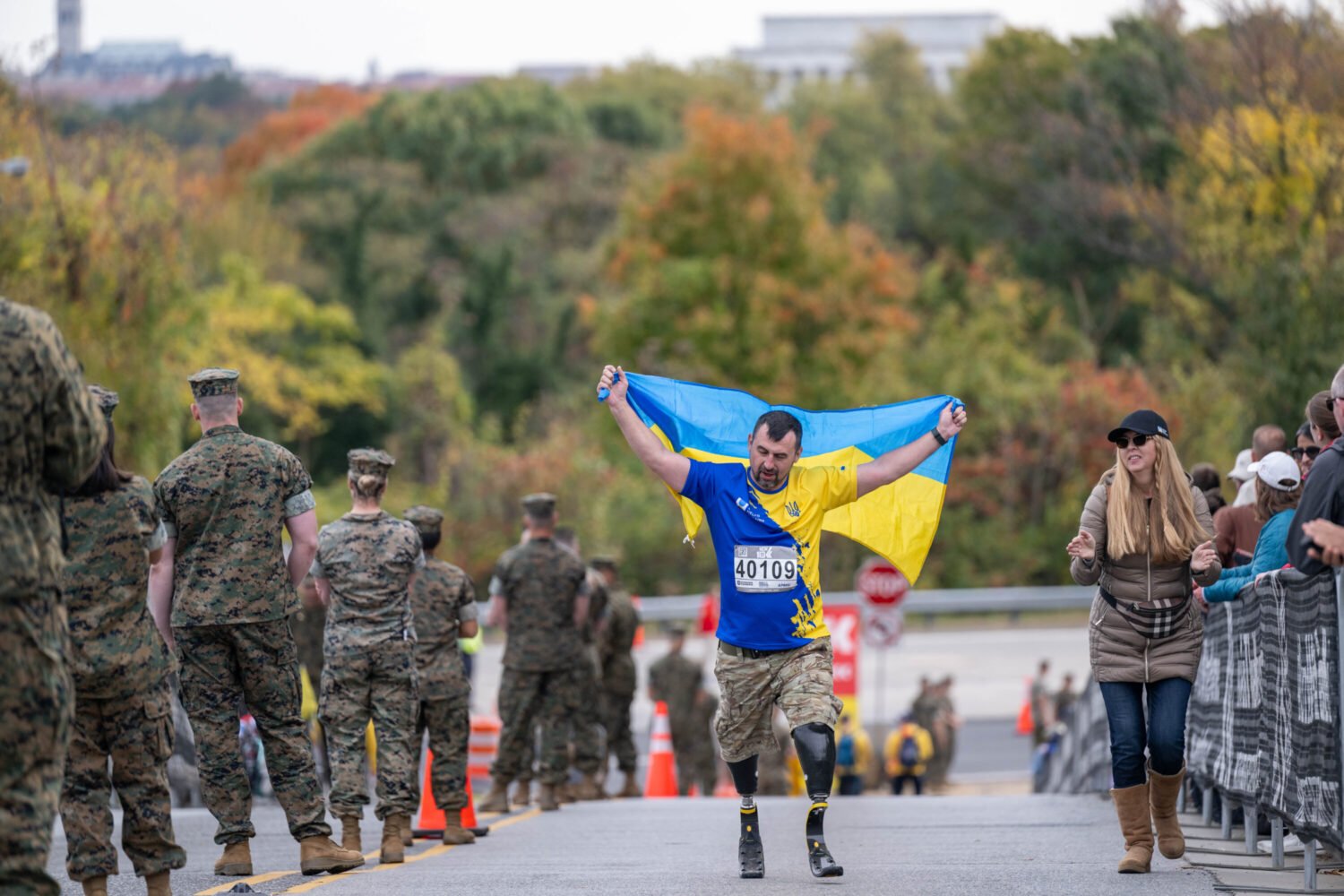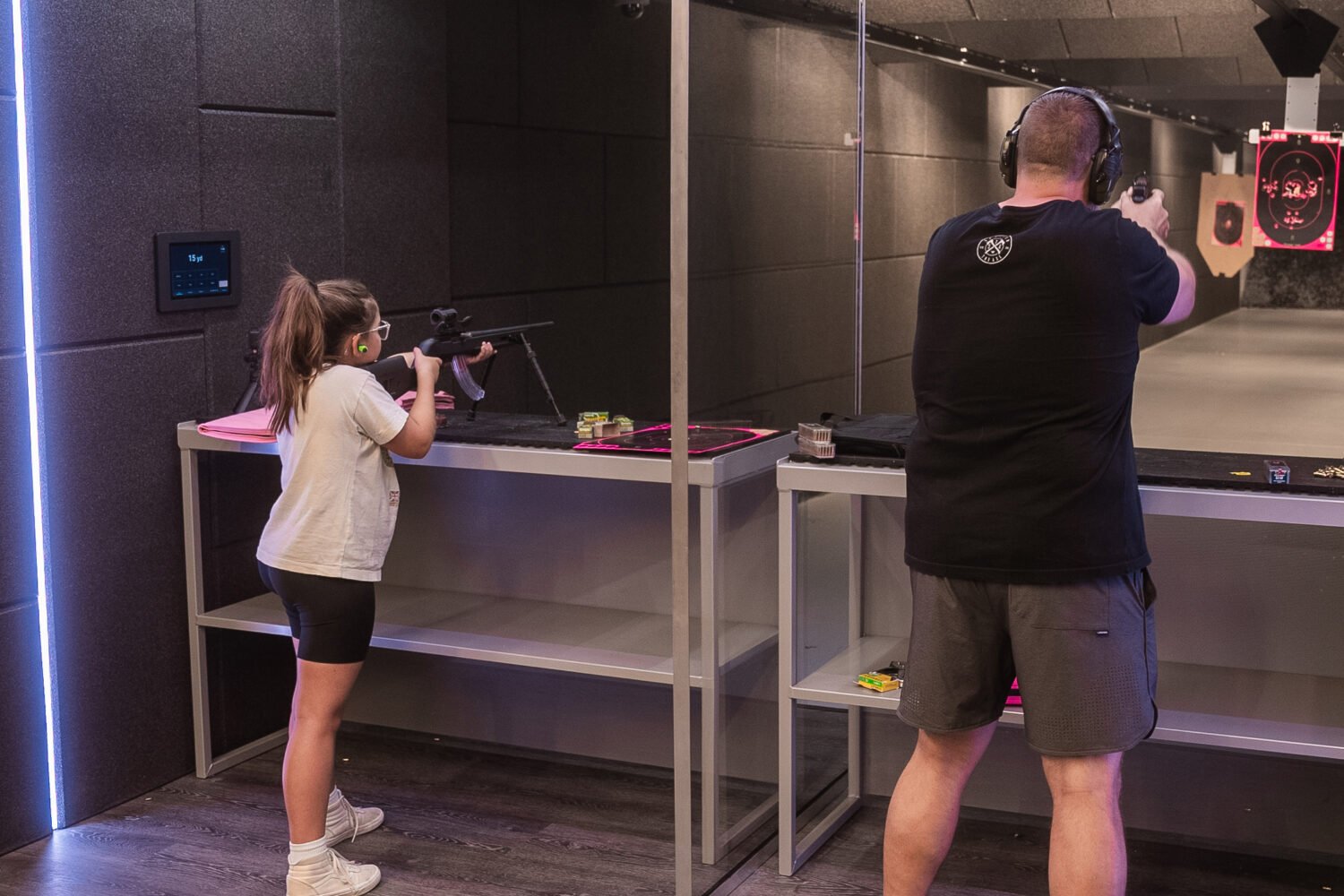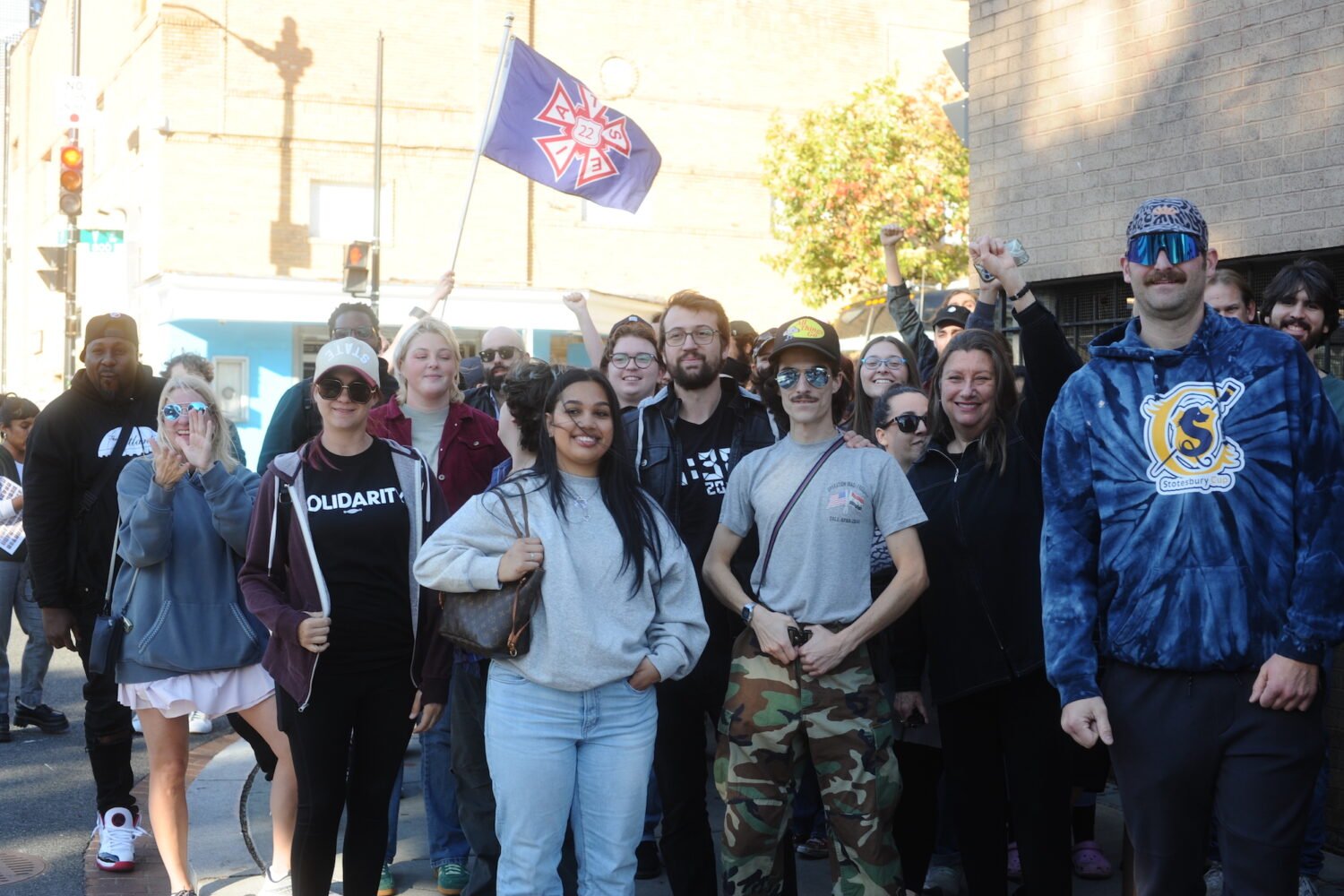Meet Brian Murphy. He’s days away from graduating from Thomas Jefferson High School, better known as America’s Best High School, where smart kids from all over Northern Virginia plot to take over the world, or at least get into Princeton.
Jefferson is a science-and-technology magnet school with an admissions process more daunting than those that guard the gates of the nation’s top colleges. By reputation, it’s a school of geeks and computer gamers. Brian, however, arrived at Jefferson caring more about history and writing than science. Tall, broad-shouldered, and blond, he’s cocaptain of the soccer team and walks with a loose-limbed confidence. Though voted biggest flirt by classmates, he’s mature, well spoken, and genuinely nice.
If Brian defies the Jefferson stereotype, that’s because the school is nothing like it’s supposed to be. Yes, whiz-kid scientists, computer jocks, and chess champions roam the halls along with more National Merit Semifinalists than probably at any other school in the country. But there’s also a professional model who juggles New York gigs with dissecting leeches in neuroscience lab. A recent grad was a world champion in the martial arts. A junior is president of Virginia’s Latin society and a college-baseball prospect.
Because it culls top talent from all over, Jefferson is often likened to the star-studded New York Yankees—and hated with the same passion. But the Yankees win only in baseball; Jefferson wins at everything. In the school’s orchestra and band, 22 students made All-State in 2008—nearly twice as many as at any other Fairfax school. Classmates of Brian’s won a national bridge championship against middle-age players. The school is even emerging as a sports power, having earned eight state titles since 2000, more than every county rival except Lake Braddock and Robinson.
It wasn’t supposed to be this way. Thomas Jefferson High School for Science and Technology was created in 1985 as a learning laboratory to seed the workforce for Northern Virginia’s growing technology industry. No one expected it to win soccer games.
Today, the fact that Jefferson is great at everything is a source of pride but also of concern. Among the faculty, there’s a fear that the school is becoming a success factory—a place where overachievers are too busy racking up trophies and college credentials to test themselves in the lab or classroom. The nation’s number-one school is asking itself: How much success is too much?
Brian Murphy arrives in the Jefferson main office on a late spring day. He’s chewing bubble gum and wearing a sweatshirt and faded jeans with a key lanyard dangling from the pocket—a portrait of cool.
Brian is cochair of the Jefferson Society, a student-run group that handles tours of the school. Last year, Brian and his cohort introduced nearly 3,000 visitors to Jefferson, among them dignitaries and educators from the Netherlands, Korea, Japan, Singapore, and China.
U.S. News awarded Jefferson the top spot in its “America’s Best High Schools” issue in 2007 and again in 2008. (The 2009 issue is due out soon.) But the school doesn’t make a great first impression. Its Annandale neighborhood is classic suburban sprawl. The school building, which dates to 1964, is sheathed partly in white metal, a once-contemporary look that now is just ugly.
Outsiders assume that Jefferson is lavishly funded, but it gets the same per-student allocation from the county as the other high schools, plus a seven-percent boost from the state. A foundation tied to Jefferson is trying to raise $750,000 to resupply the school’s labs, some of which are stocked with 15-year-old equipment.
Brian sets off with today’s visitor to see the labs, home to the senior-year research that is a Jefferson trademark. When the school opened in 1985, the country was still reeling from a landmark report warning of “a rising tide of mediocrity” in education. Created with help from local business leaders, Jefferson was to be a beacon of excellence. Staff saw the school as a learning laboratory, a chance to break from prescribed curricula and textbooks. Students would team with researchers throughout the area and work on real-world problems.
“Those were great days,” says Geoff Jones, the school’s first principal. “We could not just become another gifted-and-talented center and simply offer the very best AP curriculum in Northern Virginia. We had to do more.”
Yearlong lab research for seniors was part of that early vision. Today there are 13 labs, for everything from robotics to neuroscience.
In the chemical-analysis lab, senior Sumit Malik is hunched over a laptop working on a PowerPoint presentation. Sumit spent the previous summer at DC’s Naval Research Lab, where he coauthored a paper with his mentor. For his senior project, a derivative of that work, he built a microbial fuel cell that captures the energy of a plant’s photosynthesis and produces clean, naturally replenishing energy.
Sumit, now at Harvard, was one of 15 Jefferson semifinalists in the prestigious Intel Science Talent Search. More than 1,600 high-schoolers nationwide entered research in the competition. Jefferson had the most semifinalists of any school in the country; two, Alex Kim and Narendra Tallapragada, finished in the top ten.
In the prototyping lab is the chassis for a biofuel car under construction. In the oceanography lab, students are wrapping up a study of underwater-mining effects on the hearing of sea horses. A biotech student tests the effects of a Chinese licorice root on cancer cells in a rat.
At every stop of Brian’s tour, it’s the same. The teacher is a bystander as students work on their own or in groups. When the kids talk about their research, they look you in the eye. There’s no mumbling.
To get into Jefferson, students pass through an Ivy League-like vetting. Of the roughly 3,000 eighth-graders who apply each year, 480 are admitted. That’s a 16-percent acceptance rate, which means Jefferson is as tough to get into as Georgetown, Cornell, and Williams.
Other public magnet schools, such as Stuyvesant in New York City, have similarly rigorous admissions. But Jefferson draws from the extraordinary pool of talent in Washington, a region with the nation’s densest collection of PhDs.
“What makes Jefferson the number-one high school in the nation is almost settled right out of admissions,” says former principal Jones, now head of the private Potomac School in McLean. Only the most elite colleges draw applicants with this type of intellectual firepower, he says. “And they are selecting for a broader range of things. They have to pay attention to putting out football teams; they’ve got legacies to worry about. They don’t have that luxury of building a freshman class almost entirely on intellect.”
Jefferson has its share of geniuses. Alex Kim began thinking about the research that made him an Intel winner when he was 13. Reading a book about crayfish that caught his eye one day in the library, he was intrigued by a footnote: No crayfish had ever been discovered in Africa.
Since then, Alex has been fascinated by how species evolve and migrate across the planet. At Jefferson, he’s focused on the lobster-size giant river prawn and has won grants to collect samples in Puerto Rico and Texas. When he talks about his work, he leans across the table, his excitement building through a 20-minute dissertation.
But a stratospheric IQ isn’t the defining characteristic of a Jefferson student. The kids are quick to note that to get in, they had to do well on a standardized test created specifically for the school. We’re smart, they say, but more important, we’re good test takers.
And they’re driven. Dinner by the laptop is routine. At parties they talk about homework and all-nighters spent studying for tests. A few cast aside Facebook, a life force to many teens, as a time waster.
For teachers, such students are a blessing and a curse. There are almost no classroom-management issues; kids aim to please, do their work, and turn it in on time. Indeed, teachers say they have to work hard just to keep up with the class.
At the same time, the kids are obsessed with grades and work the angles for every point they can get. “They are professional students,” says Emmet Rosenfeld, a former English teacher at Jefferson. “They know how to game anything, and they know how to get A’s.”
But Jefferson kids play as hard as they work—hence the trophies that pile up at the school every year. It’s no coincidence that all but one of the school’s state championships have come in cross-country, track, and swimming—sports where talent is often secondary to effort.
“You have to be smart to get in,” Brian says. “But it’s a combination of being smart and being driven. I realized toward the end of my sophomore year that it’s not a school for smart kids; it’s a school for motivated kids.”
Chris Kilgore is perhaps the Jefferson archetype. As a middle-schooler at the private Flint Hill School in Fairfax, he took math courses geared for high-schoolers. At Jefferson his freshman year, he joined the Latin Honor Society and a Shakespeare troupe, played football and baseball, and trained with the crew team.
As a junior last year, Chris took four Advanced Placement classes—in chemistry, American history, Latin, and statistics. He added a college-level math class each semester—multivariable calculus in the fall, linear algebra in the spring. Rounding out his seven-period schedule were English and physics.
That wasn’t enough. Watching TV coverage of the recent economic recession, Chris decided he wanted to educate himself about how the economy works. So he enrolled in two online AP courses—one for macroeconomics and one for microeconomics.
All of this coursework led to a hellish two weeks when the spring AP exams rolled around. Chris took the tests for his four Jefferson AP classes and one each for his online economics courses. Because Jefferson’s non-AP physics course is rigorous, he did a little extra studying and also took the AP physics exam.
“I figured I might as well,” he says.
Chris slept little during his seven-exam marathon. But aside from circles under the eyes, he seemed invigorated by the experience. He scored a five on each of the exams—the top mark.
Entering senior year, Chris has yet to sacrifice much for his academic pursuits. He’s a pitcher on the varsity baseball team and works out three times a week in the off-season with private trainers. He’s a fan of The Office and iTunes. “He’s even managed to squeeze in time for a girlfriend,” says his mother, Carrie Kilgore.
An officer in Jefferson’s Latin Honor Society, Chris campaigned last year to become head of the Virginia Junior Classical League. At the group’s annual conference, a Jefferson contingent worked the crowd and helped him win. Even amid the campaign hubbub and his academic marathon, he continued to meet once a week with a retired Latin teacher. They translate Latin texts together—not because he needs help but because he enjoys it. “My friends make fun of me about this,” Chris says, “but I really love it. It’s very relaxing.”
Chris and his family live not far from Wolf Trap on a winding street of nice homes built in the mid-1990s. Each year, roughly 400 Jefferson freshmen come from Fairfax; the rest live in Arlington, Falls Church, Loudoun, Prince William, and Fauquier. It takes some students well over an hour to commute.
About nine out of ten students arrive at Jefferson from public middle schools. Families who can’t afford the $30,000 price tag of a Potomac School or Sidwell Friends see Jefferson as a private-school equivalent. Money remains an issue for some after graduation: The school gets lots of kids into the Ivies and top private schools, but more than 40 percent go to the University of Virginia or other state schools in the Commonwealth, in part because of their lower costs.
The Jefferson demographics that get the most attention revolve around race and ethnicity. The percentage of students of Asian descent at the school has grown steadily. This fall, Asian-Americans make up 54 percent of freshmen, the first time they’ve represented a majority of the incoming class. Whites account for 36 percent.
These figures are similar to what other science magnets report. Because high-level education in many Asian countries is reserved for elites, immigrants to the United States often place great importance on schooling—a value their kids internalize.
“The typical stereotype is that the Asian students have no life and hate their mothers,” says Vern Williams, a math teacher at Falls Church’s Longfellow Middle School, a feeder for Jefferson. “That couldn’t be further from the truth.”
Jeanette Du, daughter of Chinese immigrants, is a senior at Jefferson. She’s a top violinist, having made All-State orchestra each of her first three years. She also competes regionally in figure skating. Living with her grandmother, who had Alzheimer’s disease, sparked her interest in medicine and neuroscience.
Jeanette’s parents, James and Jenny, moved from Shanghai to the Washington area in the late 1980s. They nudged Jeanette as a middle-schooler to think about Jefferson, but it wasn’t a hard sell: Most of her friends were applying.
Her father occasionally pushed her to do well. “In grade school, he’d say, ‘You can’t go to that party until you learn your multiplication tables,’ ” Jeanette says. “But later on, I began to push myself. I wanted to get those good grades.”
Like others, she says the atmosphere at Jefferson is competitive but not cutthroat. Students are more likely to help one another study for quizzes than sabotage a friend’s experiment.
Whatever their backgrounds, Jeanette says, students are unified by their work ethic: “Everyone at TJ has a common goal, and that’s to learn as much as we can and succeed at life as much as we can. When we have trouble, we help each other out. It would be impossible if we didn’t.”
Brian Murphy’s family lives on a wooded cul-de-sac in Oakton. His mother, Elizabeth, is executive director of the Fairfax Symphony; his father, Kevin, is an executive with ePlus, a Herndon tech company.
Brian’s kindergarten teacher first suggested that the family consider Jefferson for him. But history and writing were his passion in seventh and eighth grades, when he attended a gifted-and-talented program at Rachel Carson Middle School in Herndon. He applied to Jefferson mainly because his friends did.
“I took the test just to see if I could get in,” he says. “Once I did, it seemed stupid not to go.”
Brian’s story is not uncommon. Jefferson draws big numbers of kids from gifted-and-talented programs in relatively affluent neighborhoods—among them Longfellow Middle School in Falls Church, Rachel Carson in Herndon, and Kilmer in Vienna. Jefferson is a natural next step for these kids.
The first Jefferson students didn’t make the choice so casually. It was seen as an experimental school, and Fairfax high schools were among the best in the nation, with Langley often singled out as a superschool. Why leave your friends to go to a school miles away?
As the school’s reputation grew, a Jefferson diploma became a hot commodity. John Aulabaugh moved his family 1,700 miles from Estes Park, Colorado, with an eye to getting his twins, Jack and Alex, into the school. The boys, Aulabaugh says, were frustrated with the schools in Estes Park. “They’re really hard workers, and they had to put up with a lot of disruptions in the classroom and a lot of counterproductive time.”
This worried Aulabaugh and his wife, Tori, who have Ivy League hopes for their kids. “We’re kind of positioning for Harvard, Princeton, maybe MIT,” he says. Both parents graduated from state schools. “We came from pretty modest means, and we just want to give our kids an opportunity we didn’t have.”
From their research on high schools—which leaned heavily on the U.S. News ranking—Jefferson emerged as their top choice. The abundance of other top high schools in Northern Virginia was a bonus; if the boys didn’t get into Jefferson, they could enroll at Langley or another area school.
The Aulabaughs, who owned a software company that they could relocate, visited Northern Virginia several times and interviewed staff at middle-school feeders for Jefferson. Last summer the family moved to Fairfax City and rented a house near Frost Middle School, where the boys entered seventh grade. By the end of the school year, their home in Estes Park was still on the market, along with a mountain condo. But the kids got straight A’s and love Frost, Aulabaugh says: “They thank us every week.”
Summer plans call for internships and tech courses. “We’re just doing everything we can to beef up their résumés,” he says. “I’m probably driving my kids to drinking at an early age. But they’re really driven, they know what they can be, and they’re working toward that.”
Kevin and Elizabeth Murphy had little to do with Brian’s decision to go to Jefferson. They worried it was a poor fit. One of their babysitters had been a Jefferson student. He was brilliant, an Intel winner and computer programmer. How could Brian match that? Plus Brian wasn’t crazy about science. The section of his application that asked for his science-and math-related extracurriculars was largely blank.
“I said that they let him in to be the balance,” Elizabeth Murphy says. “He was so far in the other direction—he was athletic, he was a good writer. But I wasn’t sure his math and science skills were what they needed.”
Jefferson can overwhelm freshmen, many of whom were too smart for their own good in middle school—they cruised, never doing homework or learning to manage their time. “Some fail for the first time here,” says Brandon Kosatka, head of the school’s counseling department. “Parents have never seen less than an A.”
The Murphys also worried that Brian was giving up a traditional high-school experience. Kevin cautioned his son, who played on a top travel-soccer team, that the sports at Oakton High would be better. “You might be giving up championships to go to TJ,” he said.
But Jefferson delivered all the trimmings of high-school life—and more. At back-to-school nights, the teachers had PhDs but also enthusiasm. “They literally jump around the room because they’re so excited,” Elizabeth says.
When Brian was a sophomore, the Jefferson soccer team won the state championship. For the Friday-night semifinal in Newport News, hundreds of kids took final exams early, then hopped buses for the nearly three-hour trip. When the buses pulled in, Kevin watched as kids came pouring off, all wearing red, one of the school colors.
Homecoming week is an explosion of school spirit. Kids dress up every day in creative, themed costumes, and there’s a parade with floats, skits by each class, and a bonfire. “It’s so big and complex that you almost need a visitor’s guide,” says former teacher Emmet Rosenfeld.
For homecoming and prom dances, kids see who can land a date in the most creative way. Flowers are de rigueur, classroom musical serenades common. Last year, Brian stood in the school driveway one morning holding an old door with prom? and the girl’s name painted on it. One boy spelled out his invitation in flowers planted near the entrance.
Don’t think Jefferson students are too different from others, says Arvin Ahmadi, a senior and editor of the school newspaper. “You have the jocks, you have the nerds, you have the kids who party—all the types you see at other schools,” he says. “The percentage of nerds may be considerably higher, and the percentage of partyers may be significantly lower. But we’ve got it all.”
What’s more, Ahmadi says, TJ kids defy stereotypes: “Athletes can be mathletes, and kids doing neuroscience research one period may be cheering at the top of their lungs in a pep rally the next.”
At a time when high schools are often big, alienating places, Jefferson has a rare esprit de corps. That’s no accident. With kids coming from dozens of middle schools scattered across the region, the original staff saw the challenge of creating community. Their solution: Throw out the regimentation of conventional high schools. Gone were bells and hall passes. Students ate lunch at the same time and anywhere they wanted—in classrooms, lounging in the hall, or outside.
Early on, the faculty rejected a traditional high-school schedule for freshmen. Incoming students take an integrated program of biology, English, and technology in groups of 60 or 70. The groups function as schools within a school; they spend nearly half the day together and are taught by teachers who work as teams. The coursework is fun—building robots, for example—and camaraderie, class unity, and friendships blossom.
Another Jefferson innovation is “eighth period.” Worried that kids commuting long distances might have to skip afterschool clubs and extracurricular activities, the staff scheduled those activities instead in twice-weekly 90-minute periods. Some kids use the time to study or catch up on lab work, but it’s also a time when Jefferson’s diversity of talent goes on display.
More than 150 clubs and groups meet during eighth period. Typical extracurriculars—newspaper, class government, Latin Honor Society, math teams, and the like—are packed. A few groups, such as the Stonecutters, which airs reruns of The Simpsons, dabble in pop culture.
Many Jefferson students use the time to pursue a passion. A handful of kids designed an alternative-energy system for the school, then raised the money to add solar panels to the roof. Two students who help manage the school’s computer systems won a $380,000 grant from Sun Microsystems for new equipment.
Jefferson kids talk of an entrepreneurial spirit at the school. If you float an idea or want to start something, they say, no one shoots you down.
Senior Jeremy Chaikind used eighth period last year to make a feature-length film. Jefferson, he recognized, had excellent writers and a great drama department. With a friend, he started the Cliffhanger Media Project, though he pitched it to others in a less-than-hopeful way: “This is what I want to do. I don’t know if we can do it. It’s never been done before.” By the end of the year, more than 20 people were working on the film.
“People saw my dream and said, ‘That’s wonderful—let’s do it,’ Jeremy says. “I think that’s a statement about TJ.”
As a freshman at Jefferson, Brian Murphy studied the eating habits of a species of flatworm. As a senior in the energy systems lab, he built a Stirling engine with a parabolic reflector to catch light and transform thermal energy to power small appliances. Along the way, he got turned on to chemistry.
“It was the perfect experience for him,” says his mother, Elizabeth.
Brian’s brother, a sophomore at Oakton High, applied to Jefferson but didn’t get in. This surprised the family because his record closely resembled Brian’s. The school, they say, is now emphasizing math and science more, squeezing out kids who, like Brian and his brother, aren’t passionate about the subjects.
“It’s kind of heading in a dangerous direction,” Brian says.
Tension over the school’s mission has simmered for years. Though a science-and-tech magnet, Jefferson aims to be a comprehensive high school with strong offerings in the social sciences, humanities, and arts. In a 1984 brochure, business leaders touted Jefferson’s 21st-century instruction in science and math but promised that “the humanities will be considered equally important.”
That duality is hard to manage. If the humanities and social studies are equally important, how many science and math courses should be required? Should the school add senior-year research options in English and history? What should the criteria be for admitting students?
That last question fuels heated debate in coffee klatches and school-board meetings. The admissions process is run not by Jefferson staff but by Fairfax school officials following guidelines established by the county school board.
Early on, the county leaned heavily on results from the school’s admissions test to make a first cut of applicants and create a semifinalist pool of 800 candidates. In the second round, teacher recommendations and student essays were considered.
Later, the school board authorized putting into the second round students who had outstanding academic records but just missed the cutoff. This was done in large part to improve the school’s diversity—specifically, to increase the number of black and Hispanic students.
In the late 1990s, however, Fairfax abandoned the practice when court rulings around the country raised doubts about the legality of such affirmative-action measures. The number of black and Hispanic students at Jefferson dropped. Together they made up only 3 percent of enrollment in 2004.
Economics may play a big role in the low numbers. Middle schools in poorer neighborhoods of Fairfax, particularly along Route 1 in the southern part of the county, seldom send kids to Jefferson.
In 2004, the county appointed a blue-ribbon commission of educators and high-school and college admissions officials to review Jefferson’s admissions process. The panel proposed eliminating the test-score cutoff and instead conducting a full review of every application.
The board declined to go that far. But beginning with the class of 2009, it broadened the criteria by which applicants advanced to the second round and adopted a sliding scale in which stellar grades could offset lower test scores and vice versa.
Five years later, the school’s racial mix has changed little. Last year, more than 1,600 applicants made it to the second round—twice as many as before—yet only 14 black and Hispanic students were admitted. That’s about 3 percent of the incoming class of 480, roughly the same as in previous years.
The new policy has become another point of contention in the tug of war over the school’s identity. Supporters of a strong math-and-science focus argue that too many kids are getting in based on leadership qualities and general academic achievement, not smarts in science and math.
Vern Williams has been teaching math at Longfellow Middle School since the early 1980s. The department he heads, legendary in the county, has sent hundreds of kids to Jefferson. Last year, Williams and his colleagues wrote recommendations for 150 kids. Some 75 were admitted.
In Jefferson’s early days, Williams says, most of the kids who got in were math fanatics. They ate and slept algebra, sometimes at the expense of the English essay due the next day.
The admissions balance between math and technology types and more academically well-rounded kids has shifted, he says. Now some of his most talented and passionate math students get turned down. “These are the kids that the school was built for,” Williams says, “and they’re not getting in. They couldn’t care less about where they’re going to go to college four years from now. They just want more of what they’re getting in middle school—cool math and cool technology.”
Fairfax officials dispute such claims. Students with good test scores sometimes don’t get in because other elements of their applications aren’t strong. Or an application may not demonstrate that a student truly is passionate about math and science. As part of the policy change in 2004, the board made clear that it wanted Jefferson students to have a genuine interest in the school’s signature subjects.
“We were insistent on that,” says Janie Strauss, a longtime member of the Fairfax school board. Many families, she adds, had come to see Jefferson as a school for gifted-and-talented students.
“A high score on the math section of the test or even a perfect score on the test does not guarantee that you will get in,” says Judith Howard, director of admissions at Jefferson. “There are students with very impressive résumés who don’t get in because they have not demonstrated a genuine interest in science, math, and technology.”
The task of managing Jefferson’s competing factions day to day falls to principal Evan Glazer. When he was hired in 2006, both sides took note of his bona fides, which include a master’s in math education, a PhD in instructional technology, and experience as principal of a science-and-tech magnet program in Roanoke.
At 38, Glazer is a young principal. With a boyish face and suits a bit big, he looks a little like a teenager at a job interview. He sometimes makes his rounds on a scooter, and he has a Segway students can ride.
Glazer has set out to reinforce Jefferson’s uniqueness—and its focus on science and math. He has denied requests for a senior-year research option in the social sciences.
“There are some people here—a small number, I believe—who would reconstitute the school’s mission,” Glazer says. “They want it simply to be a school for gifted and talented. So I do stand up in front of the community and remind everyone, ‘We’re not a GT school.’ ”
To raise the profile of lab work, Glazer is creating events to celebrate student research and demonstrate its real-world impact—events he hopes will make high-level science more attractive to kids heavily invested in sports, community service, or other interests. “They carry a full plate,” he says. “They want to do it all.”
Glazer is also championing students who pursue a passion during eighth period or on their own time. He wants to see students try new things and chase their dreams, such as the kids who put the solar panels on the roof and Jeremy Chaikind’s Cliffhangers group.
Glazer is fighting perhaps his biggest battle against what has become the gold standard in high-school education: Advanced Placement courses. Last year, Jefferson kids took 3,300 AP exams—about a tenth of the total from all 25 Fairfax high schools.
It’s a badge of honor at Jefferson to pack five or six AP courses into the seven-period day. Last spring, the school newspaper ran a hall of fame of kids taking 11, 12, and 13 AP courses over their four years.
The school’s reputation is due in part to its success in the AP program. Virtually 100 percent of Jefferson students score three or better on the AP tests’s five-point scale—a key to its top U.S. News ranking.
But Glazer says students would be better off balancing AP courses with more electives. Jefferson teachers have created courses in organic chemistry, DNA science, neurobiology, and the like, which he says offer intellectual challenges equal to or better than AP courses, with curricula designed for students to do critical analysis.
Why come to Jefferson, teachers ask, if you’re going to take the same APs offered at virtually every high school in America?
So far, Glazer and the teachers haven’t sold students on the idea. The school recently began an elective for an alternative to AP American history. “Maybe 10 percent of students—not even 10 percent—are interested,” Glazer says.
AP courses are hard to resist for students with an eye on college. Grades in APs are assigned a higher value when teachers calculate grade-point averages—a signal to colleges that APs are more rigorous than the electives that Glazer promotes, parents and kids say. Plus, good scores on the AP tests can impress college admissions officers and translate to college credit.
“A lot of students will be motivated by that extrinsic reward,” Glazer says.
As a countermeasure, he has a proposal before the county to eliminate grade-point averages from student transcripts. “We want students to select courses based on their passions and not what will give them a higher GPA,” Glazer says.
He is joined in his battle against AP dominance by some of Jefferson’s veteran teachers and a few alumni who have returned to teach. They say students’ obsession with AP is one of the biggest changes at the school—and perhaps the most harmful.
AP curriculum is standardized and limited, says Jennifer Pierce, a math teacher who graduated from Jefferson in 1994. “AP is a baseline for Jefferson students,” she says. “Students are really just regurgitating information.” The majority of the faculty would gladly ban APs from the school, she says.
Indirectly, Glazer and his allies are fighting the culture of achievement that has enveloped the country as a whole—and Washington in particular—since the school opened. The best learning, they say, comes from exploration and experimentation. Rewards are not always tangible, and failure is often the best teacher.
But lots of kids today approach education as if it were a video game. At each level, they believe, you work to master the tricks and collect enough points to move to the next level. The ultimate goal may be getting into a good college. But even when it’s not, kids approach school this way because they’re programmed to chase success.
“Every year that goes by, you see these kids under tremendous pressure to build résumés,” says Bettie Stegall, a creative-writing teacher who retired recently after more than 20 years at Jefferson. “Some kids don’t have two free hours the whole week because they’re so scheduled by everything.
“We have to find a way to pull away,” she says, adding that that’s Glazer’s biggest challenge: “I think he has the courage and the integrity and the vision to do it. It’s going to be quite interesting to see where the school goes in the next few years. We’re really at a turning point.”
Visitors to Jefferson this year won’t have the pleasure of meeting Brian Murphy. He applied to seven colleges and got into seven. Johns Hopkins was his top choice, but its tuition seemed high.
“In the end, it came down to money,” he says.
Brian enrolled this fall at the University of Virginia along with 103 of his classmates. His soccer career is over, though he hopes to play club ball at UVa. He plans to study chemical engineering, maybe winding up in science policy, where he can tap his writing skills. Who knows?
One thing he does know from what his TJ friends who are already at UVa have told him: He’ll be able to handle just about anything his professors throw at him.
What do graduates of America’s best high school go on to do with their lives? Naturally, many go on to top colleges. Click here to see a list of the acceptance rates of Jefferson seniors at Princeton, MIT, Yale, and other selective schools.
After college, many Jefferson alumni go on to jobs as researchers and scientists. Some are on the cutting edge of Internet technology, while others are making a name for themselves in music and culture. See a brief list of noteworthy alumni here.
Below, watch a video of Bettie Stegall, a now-retired teacher at Thomas Jefferson, reminisce about her years at the school and what makes it so special.








